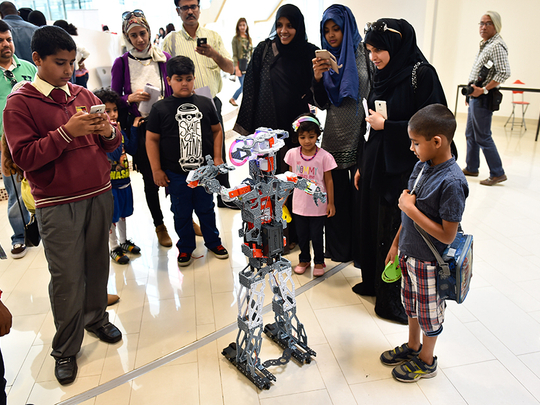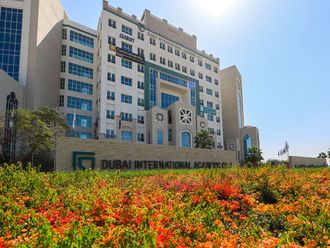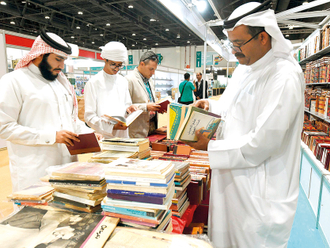
Dubai: More than 1,800 students, the inventors, scientists, and artists of tomorrow, displayed their precocious abilities and ideas at the fifth annual Maker’s Day 2016, which took place on Saturday at GEMS Wellington Academy in Silicon Oasis.
More than 215 student projects were registered at yesterday’s event.
Student and company-held workshops were also conducted to teach students about robotics and sustainable technologies, among other topics. Government groups also took part in the event, including the Hamdan Award, Dubai Silicon Oasis Authority, the Prime Minister’s Office (involved in the Robotics for Good category), and Abu Dhabi Technology Development Committee. Besides the stalls exhibiting student inventions and ideas, the campus was enlivened by music recitals and original entertainment.
“We wanted Maker’s Day to be a fun day out for the entire family,” Christine Nasserghods, Innovation Leader at the GEMS Innovation Research and Development Department, said.
“We’ve taken leaps forward since the event’s establishment in 2011,” she said, adding that Maker’s Day first started out as a student-run event with 28 student groups participating. “Today, we have 215 groups and 1,800 students from 32 schools taking part in the event.”
Although the primary aim of the event is to reinforce the concept of sharing ideas and innovative practices, Maker’s Day also offers a tinge of competition between the students.
“There’s a People’s Choice Award, a trophy of recognition given to studentgroups who amass the most number of votes from visitors,” Nasserghods said. “There’s also a judging panel which selects 10 groups to take part in an accelerator programme.”
The groups taking part in the accelerator programme receive training and funding to ameliorate their projects. Two months after taking part in the programme, students exhibit their prototype to prominent figures and companies in the relevant field, seeing where their projects take them next.
Mahesh, Maanas, Vignesh, and Pranav, from Cambridge International School, exhibited three fully functional robots, the Eco-Bots, which have the potential to be used in factories and waste collection sites.
“The first robot, the Turtle Bot, has two sensors at the bottom,” Mahesh said, as the palm-sized robot moved along the brim of a circular path. “The sensors detect the dark colour and makes the robot move along it. It could be used in factories to move heavy objects and other tasks.”
Maanas explained that the other robots could be used to pick up waste material and dispose of them in garbage bins.
Grade 11 students, Shivam Malpani and Swayan Parida, wanted to invent something that could be helpful on a daily basis. They came up with the Magic Mirror, a reflective surface on which weather updates, news and even fashion advice are displayed.
“The Magic Mirror is operated by a simple low-cost Raspberry Pie computing chip,” Malpani said. “It could be used instead of mirrors around the house. The Magic Mirror gives you weather updates and news.”
“But the cool thing about it,” Parida said, “is that it can show you how you’d look in a particular outfit and even suggests what you should wear given the weather conditions. There are numerous technologies that are released every day but are quite tedious when applied to everyday use. We wanted to create something that could be helpful on a daily basis.”
Twelve year-old Sudhansh Kumar developed an app that minimises a computer’s energy consumption. “When not in use, a laptop uses 213 watts of energy,” Kumar said. “The app decreases that to 130 watts while simultaneously extending battery life.”
Kumar also developed an AI, much like Siri on the iPhone, called Green Man. “Green Man could be used to efficiently navigate through a computer’s files, folders and applications. Overall, the app was designed to help the environment. I hope to see it in use soon.”











